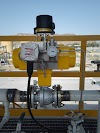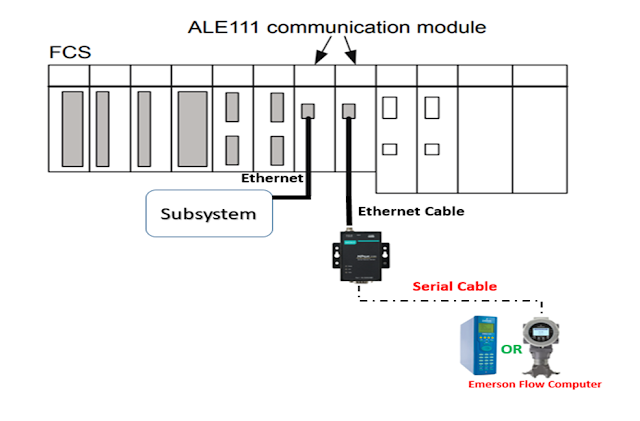HEAT DETECTORS
Heat detectors should be applied for the
detection of fires that are expected to build up quickly and generate much heat.
They generally have a low spurious alarm rate, but are slow in detecting fires.
They may also be applied as a backup for fire detectors in, for example, gas
turbine enclosures.
If heat detectors are applied in open areas
for general fire detection, they should be spaced so that one detector covers
approximately 25 m2, and heat shields should be installed to encourage heat
build-up where detectors are more than 8 m above potential fire sources.
Heat detectors are classified as follows:
a) Fixed Temperature Detectors
These detectors
are either of the linear type, such as fire detection tubing and heat sensitive
cable, or spot type, such as quartzoid bulb and fusible alloy links and plugs.
b) Rate-of-Rise Heat Detectors
These detectors
are designed to function when the temperature of their operating element rises
at a rate exceeding a predetermined amount, regardless of the temperature
level.
They are typically
used in those applications where, under normal circumstances, appreciable
variations in ambient temperature may be expected, for example during the start
up and normal operation of gas turbines.
c) Combination Type Detectors
Combination-type
detectors may employ more than one operating principle. A typical example is a
combination of fixed temperature and compensated rate-of-rise detector, which
is capable of responding accurately to both slow and fast temperature rises.
They should therefore be applied where a combination of the circumstances
described under fixed and compensated rate-of-rise detectors are expected.
d) Rate Compensated Type Detectors
Rate-compensated
detectors have the ability to operate whenever the surrounding air temperature
reaches the set point under all conditions of rate of rise in temperature.
Where the above detectors are used in open areas, consideration shall be given to installing heat shields to encourage the build-up of heat.
COMBINED HEAT AND SMOKE DETECTORS
Combined heat and smoke detectors are
compact devices, and typically incorporate a temperature sensitive element and
an optical smoke detector.
Most commonly, the temperature sensitive
element is a thermistor, producing a linear response against temperature.
Variations exist, but combined heat and smoke detectors are normally fixed
temperature devices with a set point at 60 °C.
Smoke detection is typically optical
light-scattering from visible smoke particles as stated earlier in this
document.
Combined heat and smoke detectors can offer
benefits where a large number of combustion processes are likely. For example,
some fires (fast burning and some liquid fires) produce little or no visible
smoke, but they do produce significant heat. Combined heat and smoke detectors
may well be suited to such applications, but the COMPANY shall be consulted on
their use.









0 Comments